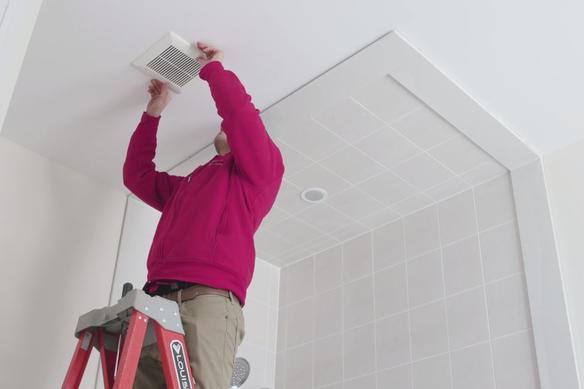Indoor Air Quality: A guide for homeowners

The secret to a healthy home
IAQ is known to affect your health, comfort and well being.
A guide for homeowners
Indoor air quality (IAQ) is more than just a green building buzzword – it’s a key consideration for any homeowner looking to create a healthy and comfortable environment. Lets help you demystify some of the industry terms you may hear regarding IAQ.

What is indoor air quality?
Indoor air quality (IAQ) describes the amount of moisture, oxygen and air pollution inside a building. Healthy indoor air has moderate humidity, good oxygen levels and low concentrations of airborne particles and harmful gases. Poor IAQ can have a negative impact on human health and cause expensive structural damage to buildings.

What causes poor indoor air quality?
Dust, pet dander, pollen, bacteria, viruses, mites, cockroaches and smoking are common sources of poor IAQ. Lack of ventilation can cause a build-up of moisture (leading to mildew and toxic mold growth) and air pollutants like carbon monoxide, carbon dioxide, radon and volatile organic compounds (VOC) emitted by building materials, furnishings and some cleaning products.

What is an ERV?
An energy recovery ventilator (ERV) is an HVAC device that provides balanced, energy-efficient ventilation by transferring heat and moisture between incoming fresh filtered air and outgoing stale air. In the winter, an ERV keeps heat and moisture inside the building; during hot, humid summer months, it maintains cool, dry indoor air.

ERV or HRV?
A heat recovery ventilator (HRV) is similar to an ERV except it only transfers heat, not moisture, between incoming and outgoing air. By expelling moist air during the winter, an HRV may cause indoor air to become too dry. In the summer, an HRV may increase indoor humidity, driving up air conditioning energy consumption. ERVs are generally recommended for houses in Canada.

How much ventilation does a house need?
Ventilation requirements vary from house to house depending on size, layout, insulation, climate, IAQ and other factors. Attic, garage and whole-house ventilators, as well as kitchen and bathroom ventilation fans, are rated by how much air flow they can generate, measured in cubic feet per minute (CFM).
Improve your home’s air quality efficiently
Of course, most homeowners today aren’t building their homes from scratch, and many aren’t in a position to do a full remodel to address IAQ issues. Luckily, most homeowners can still take steps to improve their home’s indoor air quality.
The first line of defense against poor IAQ is to reduce or remove the source of pollutants. For example, paints, solvents or other chemicals should not be stored in the home.
Another safeguard is to use low-VOC building materials and cleaning products. As homeowners have become more concerned about indoor air quality, businesses are beginning to offer non- or less toxic versions of building materials – such as low-VOC paint or formaldehyde-free flooring – and common household products – such as natural cleaners and personal care products.
Finally, it’s crucial to exhaust the rooms where pollutants and moisture are produced. Through proper ventilation, pollutants can be isolated, mitigated, removed and exhausted. A good ventilation system can filter air, control mold and mildew, and dilute or eliminate pollutants such as smoke, dust, metals and carbon dioxide, thus vastly improving your home’s indoor air quality. The best ventilation systems can also save energy and improve the durability of your home.
By installing high performance vent fans, you can efficiently – and using sensor controls, automatically – remove any stale, moist, or polluted air and replace it with fresh air from outside.


